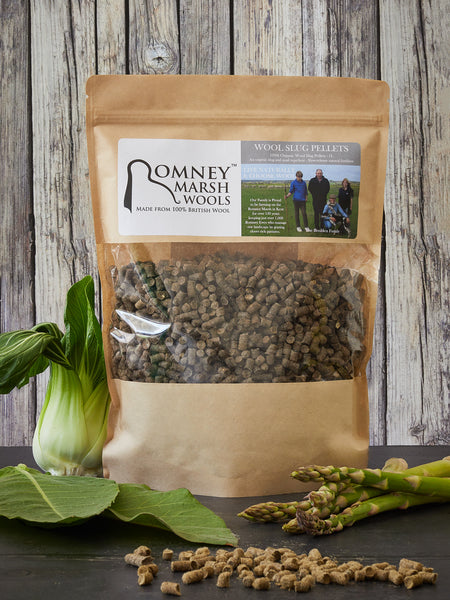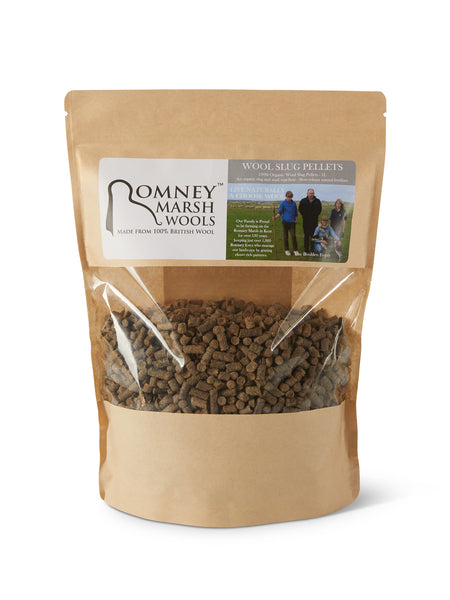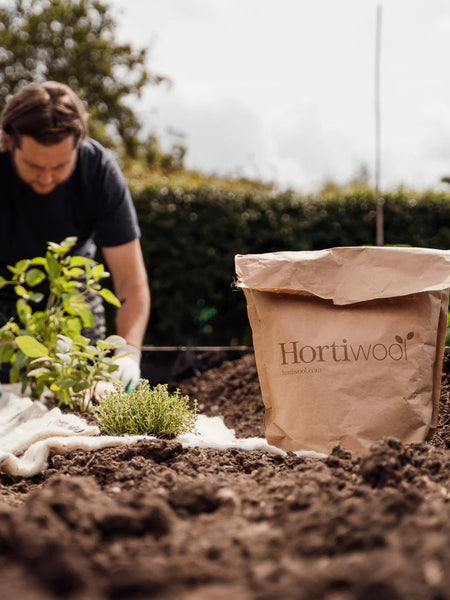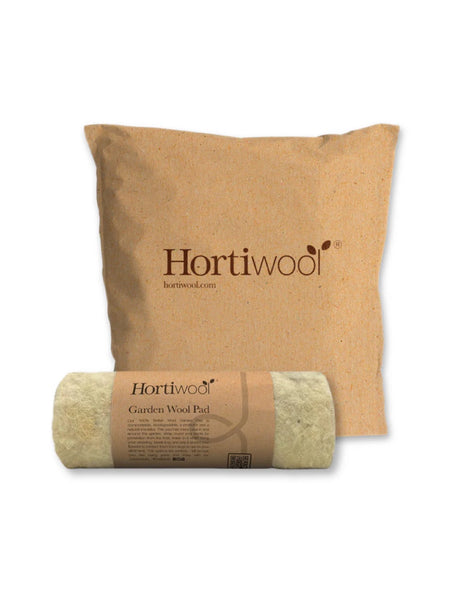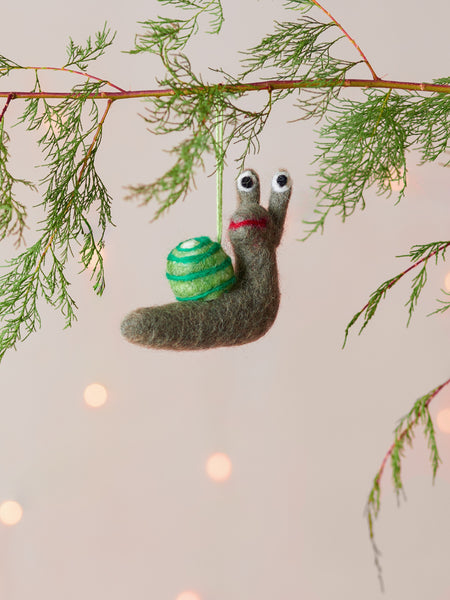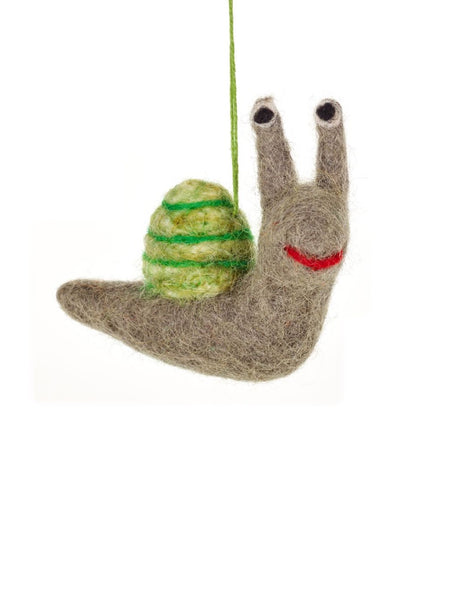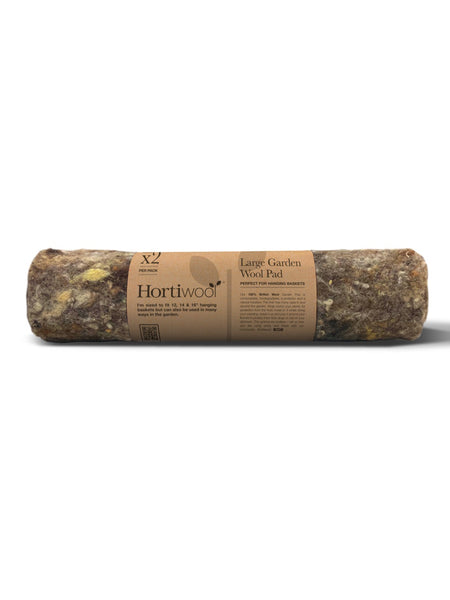With their large, lush leaves in every shade of green, white, ivory, yellow and gold, hostas are noble plants with a huge global following. There are thousands of varieties to choose from, ranging from ankle-high miniatures to statuesque giants with leaves as long as your forearm. Hostas thrive in the UK’s temperate climate and make wonderful garden plants.
But there’s a drawback - slugs and snails find them irresistible. Overnight, mischievous molluscs can reduce a hosta’s majestic leaves to tatty, slime-covered skeletons - not a good look for your garden. Once the foliage is muched, there’s little you can do other than remove the ugliest leaves and wait until the following year for a new flush.
Whether you’re just starting to grow these handsome plants or have tried and failed to stop them from being eaten, read on for six strategies that will give your hostas a chance to thrive.
Choose your varieties carefully
Hosta hybrids with thick, glaucous or puckered leaves are usually more resistant to slug and snail damage than those with thin, filmy foliage. Varieties I find most resilient in my garden include ‘Halcyon’, ‘Devon Green’, ‘Patriot’ and ‘Monster Ears’. At the other end of the spectrum, ‘Chinese Sunrise’ is a mollusc magnet requiring constant vigilance to keep it free of bite marks. Another strategy is to ‘go large’ when picking a plant. Varieties such as 'Liberty' (below), ‘T Rex’, ‘Sum and Substance’ and ‘Empress Wu’ have enormous leaves held well clear of the ground, and these are seldom nibbled in my garden. Specialist hosta growers often list slug-resistant varieties on their websites, so be sure to check these out before making a purchase.

Select a safe space
Hostas prefer to grow in cool, semi-shaded areas that are evenly moist throughout the year. Unfortunately, these are the same conditions beloved by slugs and snails. Nevertheless, there are three things you can do to keep them apart.
- Plant in pots. By lifting hostas off the ground, you are making it more difficult, but not impossible, for slugs and snails to reach their tasty leaves. You can introduce additional physical barriers, such as grit, copper tape, or wool pellets, to make their mission more difficult (see below), or elevate your pots further by placing them on a table. This has the added benefit of bringing the hostas closer to eye level, where they can be admired.
- Choose an open spot. Slugs and snails like nothing better than hanging out on a wall, fence or tree trunk, especially if climbers shelter it. They’ll use the upright support to cruise up to your hosta’s crunchy canopy and snack on it. I am convinced they can abseil too! Choosing an open spot where birds and hedgehogs can forage for slugs and snails may hinder pests’ progress towards your treasured plants.
- Plant at the water’s edge. Toads, frogs and ducks, if you are fortunate to have them in your garden, will make short work of mucus-covered molesters. Take advantage of pondside planting opportunities if available and double your hosta enjoyment by seeing them reflected in the water.

Keep it clean
There was a time when a good garden was kept spotlessly clean, free of fallen leaves, weeds, and wildflowers. Pests were sprayed, and untidiness wasn’t tolerated. Modern gardeners neither have the time nor inclination to maintain a sterile space, but with chaos comes uninvited guests. Slugs, snails and woodlice favour decaying matter for their dinner and will be attracted to dead leaves, compost, and wood piles. If possible, keep the area around your hostas clear of decaying matter: this includes organic mulches, which attract slugs to hostas like celebrities to a red carpet. Hostas are completely hardy in the UK and don’t require a protective mulch over winter. However, if you want to enrich the soil around your plants, apply the mulch in autumn and redistribute any remaining material before new shoots emerge in spring. A granular, slow-release fertiliser will nourish from April until October when your hostas are growing.
If you’re growing hostas in pots, sweep between containers regularly and check underneath for stowaways.

Reduce the pest population
If you want to reduce the slug and snail population in your garden permanently, you have three options: kill them yourself, encourage wildlife to do your dirty work, or relocate the blighters. If none of these options appeals to you, or killing other creatures challenges your values, skip to the next section.
- There are numerous ways to rid your garden of slugs and snails by killing them. If the prospect doesn’t offend you, it’s a case of deciding how hands-on or hands-off you are prepared to be. Slug pellets containing ferric phosphate will poison them slowly, nematodes will paralyse them, salt will dehydrate them, beer traps will drown them and cutting them in two with a sharp knife will dispatch them immediately. The choice is yours!
- Hedgehogs, frogs, toads, rodents, some birds and some beetles will happily dine on slugs and snails. Around our coastal garden, we have a healthy population of gulls, magpies and blackbirds that guzzle gastropods, leaving us with relatively few to deal with.
- My preferred method of control when things get out of control is to collect slugs and snails in a bucket and release them on the clifftop where they can go on their merry way. Studies show that you need to move them at least twenty metres away from where you found them to avoid them returning. Unless you have an excellent overarm throw, it’s unlikely that lobbing slugs and snails into next door’s garden will do you or neighbourly relations much good.

Create a physical barrier
Death is not the only answer. If you prefer to live and let live, there are many ways to persuade slugs and snails to turn their back on your hostas. None of them is failsafe, and what works for one gardener might not prove effective for another. I suggest experimenting and settling on a combination of deterrents that work for you, in your space.
- Physical barriers, such as coarse grit, pulverised seashells, crushed eggshells, diatomaceous earth, coffee grounds, and wool pellets, can all be used to keep slugs and snails away from your hosta plants. By irritating the underside of gastropods’ soft bodies, all these materials act similarly, with wool and coffee grounds providing the additional benefit of a nutrient boost for the soil when they decompose. To be effective, physical barriers must be applied before hostas start growing in spring and should be continuous, with no gaps for slugs and snails to glide through. If slugs and snails can reach your hostas by travelling up walls or across from other plants, they will be ineffective.
- Try copper, which discourages slugs by giving them a very mild electric shock when they pass over it. It doesn’t harm them, but they’re thought to find the sensation unpleasant enough to halt their passage. If you grow hostas in pots, you can apply a sticky-backed copper tape below the rim to create a barrier. In a border, you can place a solid copper ring around your emerging hosta for protection. Some horticulturalists believe that using copper tools will, over time, discourage slugs and snails by depositing tiny fragments of metal in the soil, which they claim repel these pests. I would not rely on this tactic, but there are numerous other advantages to copper tools that make it worth accepting as an added benefit.
- Brew a garlic wash - slugs and snails dislike alliums, which is why it’s rare that chives, onions, shallots and leeks get massacred. Many professional growers spray their hostas weekly or fortnightly with a diluted cordial made from garlic.
Here’s how to do it:
- Place two whole bulbs of garlic in a saucepan with 2 litres of water. Open the kitchen windows and turn on the heat!
- Boil the garlic until soft and squash the bulbs with the back of a fork to release the juice inside.
- Sieve the broth to remove the skins and stems. You will be left with a cloudy liquid concentrate that looks like Robinson’s Barley Water. DO NOT confuse the two!
- Store your homemade garlic wash in a cool, dry place or a refrigerator. In ideal conditions, it should keep for 12 months.
- When your hostas begin to grow in spring, dilute approximately two tablespoons of garlic wash in five litres of water and pour it into a spray bottle or watering can. You’ll need to apply it at least once a fortnight from February to October - more regularly if it’s a soggy summer.
- Keep in mind that garlic is toxic to dogs, so don’t use it if your pooch is prone to chewing your plants. On the bright side, garlic may also deter deer if they are a nuisance in your garden.

Water in the morning
Hostas like a damp spot, which is why you often see them planted in gardens, around ponds or by streams. If you grow hostas in pots, they will need regular watering, as slugs and snails are most active after dark and are particularly attracted to moist conditions after rain. It is sensible not to water them in the evening, as this creates the perfect, humid ambience for a spontaneous midnight feast. Refresh your plants in the morning, so that by the time night falls, the hosta leaves and the surrounding area will be dry and less appealing to uninvited guests.
Relying on a single method of prevention and control is a risky strategy; therefore, I suggest using all six strategies to keep your hostas in optimal condition. If you know or suspect slugs and snails will be tempted by your hostas, choose nibble-resistant varieties, position them carefully in your garden and remove decaying matter from the scene of the potential crime. Once planted, take steps to reduce the pest population and discourage any survivors by creating physical barriers. Save watering for early in the day - the best time to be in the garden anyway - and your hostas should remain happy and healthy all season. Good luck!

